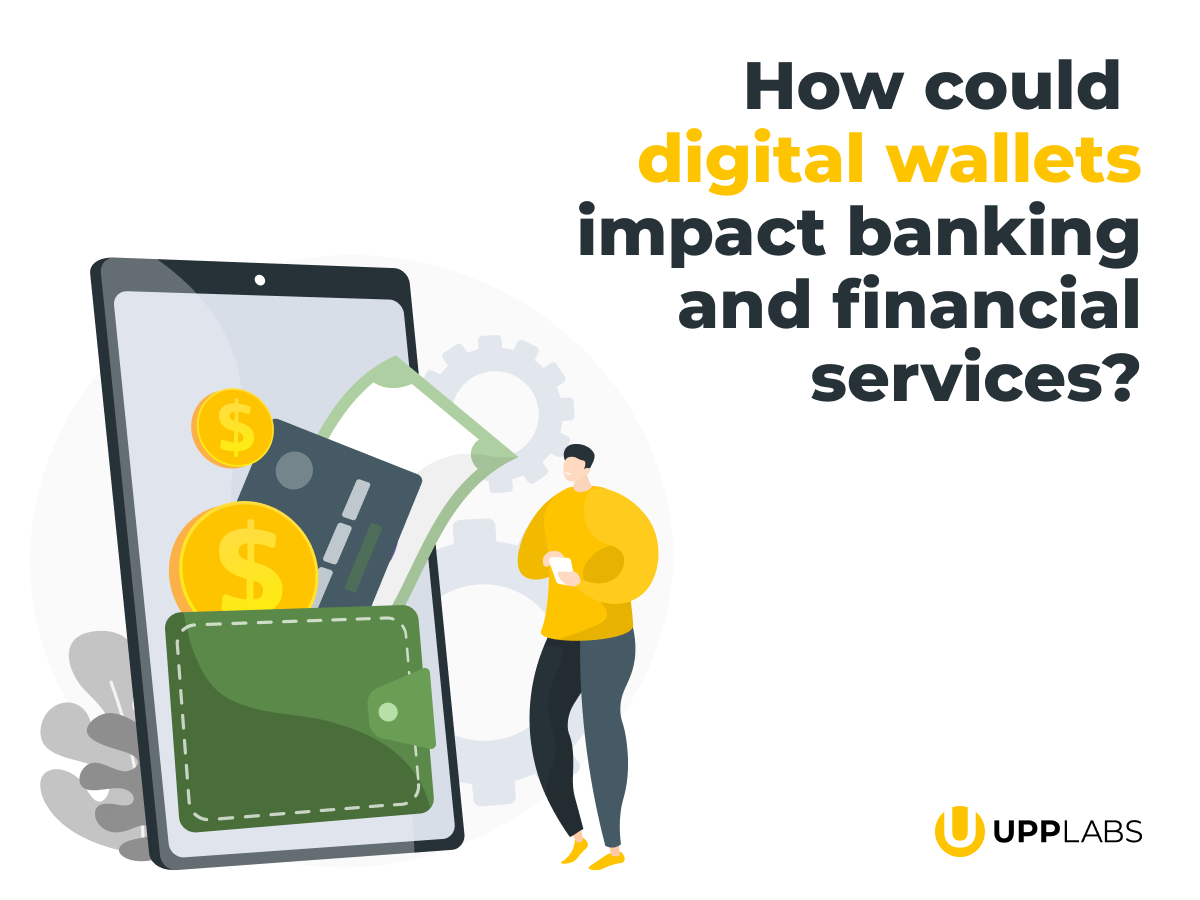We live in a world where every information is easy to know. Now it’s possible to find out not only where you were last weekend, but even what’s your name on somebody’s phone. Many may be upset or even annoyed by this fact, but this is only one side of the coin. On the other hand, it allows you to ensure the safety of yourself and your environment.
Banks and lending solutions follow the same logic – the more you know about your customer, the better. Therefore, the KYx procedure is a necessary element of assessing the risks associated with the bank’s acceptance of the client for service. In this article, we will find out more about how the KYx changing the lending tech and what are the most up-to-date trends affecting KYx processes.
What KYx stands for?
The KYx stands for KYC, KYV, KYE, KYB, etc. implementation, and customization, where
- KYC stands for Know Your Customer
- KYV stands for Know Your Visibility
- KYE stands for Know Your Employee
- KYB stands for Know Your Business
KYx is a mandatory procedure for financial institutions, exchanges, lending, bookmakers to identify counterparties. Without the use of special tools, obtaining information about individuals and legal entities can be time-consuming, and the quality of the data obtained is not always guaranteed.
Thanks to KYx, the bank can protect itself from suspicious customers who have illegally earned their money, are involved in corruption, or financing terrorists. Refusing to work with such customers helps banks protect themselves from large fines, loss of license, or serious reputational damage.
The most known is KYC (Know your customer) – a banking and exchange regulation term for financial institutions and other companies working with private individuals’ money, meaning that they must identify the counterparty before conducting a financial transaction. This requirement applies to obtaining reasonably complete information about counterparties-legal entities, the nature of their business, and individual business transactions. This compliance is used to prevent money fraud, terrorist financing, and tax evasion. Currently, the requirements and standards aimed at implementing this principle are established at the level of national legislation, regulatory documents of banking regulators, and international organizations such as the FATF. With banks trying to root out fraud and avoid terrorist financing, it is vital that KYC compliance with Fintech be top-level.
What is the KYx process?
The use of the “Know Your Customer” principle should be considered as an additional opportunity for business development and reputation. First of all, the company’s effective KYx procedures demonstrate the company’s principle of conducting business legally in accordance with international standards and requirements for combating money laundering and corruption. In addition, if a company knows that a counterparty or buyer is engaged in illegal or unethical activities, it is unlikely that it will expose its business to possible sanctions and reputational risks.
Second, identifying a customer or counterparty allows you to better understand their needs, and thus offer more customized solutions and strengthen their position in the market. Third, the application of the KYx principle allows to increase trust in business both on the part of current clients, and on the part of potential clients, and also to build stronger relations with potential investors and partners.
1. Customer identification
Identification and verification are part of the procedure, which banks and other subjects of primary financial monitoring are obliged to conduct before establishing a business relationship with the client, making a transaction, conducting lending operations, or account opening. Clarifying the concept, it should be noted that the identification is aimed at identifying the person on the basis of the documents provided while the purpose of verification is to establish the affiliation of the submitted information and documents to such a person and their authenticity.
2. Customer Due Diligence
Although the term first appeared on the US stock market in the 1930s, the procedure was formalized and defined by the Swiss Banking Association in the 1970s to consolidate banks’ basic approaches to customers when opening accounts. Today the term is used in a broader sense. However, for the banking sector due diligence is part of the “compliance” procedure and provides a set of measures to study potential customers, their activities, sources of capital, and determine the degree of risk for the bank in establishing a relationship with such a customer.
There are three levels of Due Diligence:
- Simplified Due Diligence (“SDD”) are situations with a low risk for money laundering or terrorist funding and where a full CDD is not necessary. For example, low-value accounts.
- Basic Customer Due Diligence (“CDD”) is data for all customers to verify their identity and estimate the risks associated with that customer.
- Enhanced Due Diligence (“EDD”) is additional data obtained for higher-risk customers to get a deeper understanding of customer’s activity to mitigate associated risks. While some EDD factors are specifically preserved in a country’s legislation, it’s up to a financial institution to determine their risk and take measures to ensure that their customers are not bad actors.
3. Ongoing Monitoring
The law provides another new tool for conducting the KYC procedure – the ability for banks to rely on the results of identification and verification obtained by another entity of financial monitoring. Thus, it can be stated that banks can now use the relevant KYC information obtained both within the banking group and outside it. This innovation complies with European directives and regulations applicable in EU jurisdictions. The great advantage of this tool is the expansion of opportunities for customers of both banks and non-banking institutions and companies to rely on information about the “purity” of the customer without self-examination.
The ability to use the results of identification and verification conducted by another bank (another entity of financial monitoring) should form a culture of interaction between financial institutions and greatly simplify the work of customers with several banks and other financial market participants.
Depending on the customer and the risk mitigation strategy, the other factors that need to be monitored are:
- Spikes in activities
- Out of area or unusual cross-border activities
- Inclusion of people on sanction lists
- conflicting media mentions
Why are KYx Regulations needed for banks and lending services?
The KYC procedure implements the recommendations of the FATF (The Financial Action Task Force) – the international standard, which countries should implement through measures adapted to their particular circumstances. The FATF Recommendations represent the key measures that countries should have in place to:
- find the risks, and regulate policies and domestic coordination;
- go after money laundering, terrorist financing, and the financing of proliferation;
- cover the preventive measures;
- confirm powers and responsibilities for the competent authorities;
- intensify the transparency and availability of beneficial ownership information;
- facilitate international cooperation.
Most countries around the world have adopted regulations that require anyone who carries out financial transactions to prove their identity. Throughout Europe, compliance practices in the Fintech industry differ from country to country and fall within a number of jurisdictions. In some countries, Fintech had no regulations and was an easy target for fraud.
The minimum requirements to open an individual financial account are stated in the CIP (Customer Identification Program):
- Name
- Date of birth
- Address
- Identification number
The CIP usually provides guidance, and it’s up to the individual institution to choose the exact level of risk and set a policy for that risk level.
Financial services organizations can save time, gain greater transparency and streamline their operations by adopting LEIs (Legal Entity Identifier) for all of their customers. Typically, banks operate in different countries and therefore need a common global standard. The LEI offers companies a unified approach to identifying legal entities that can simplify business transactions. Through the Global LEI Index, the companies can get access to the largest online resource for open, standardized, and rigorously reviewed legal entity reference data. No other global and open system for identifying legal entities provide such a strict procedure for regular data verification.
Thus, the use of LEIs in other methods of verification of legal entities, including solutions based on digital certificates and blockchain technology, will make it easy to connect all records associated with a particular organization and determine the owner. As a common link, LEIs can provide clear identification of the participants in any online transaction, making it easier for everyone to participate in transactions in the global digital marketplace.
The most up-to-date trends affecting KYx processes and lending solutions
1. Digital identification
The digital identity verification market is predicted to reach $12.8 billion by 2024, despite the fact that digital IDs are still not so frequently used today. But the security of IDs is a permanent customer concern that still relies on password-based systems or 2FA processes that are vulnerable to cyberattacks. To improve already existing biometrics technologies, Fintech companies use one-time passwords (OTP), as well as risk-based authentication. This adaptive authentication analyses such data as a user’s geolocation, registered devices, biometric data, OTP, and many more.
2. Virtual banking tools
Due to the pandemic situation, the customers and the banks now experience the need not only to develop digital identification tools but also to develop virtual and video banking tools. With their help, the financial institutions are able to communicate and interact with their customers using web cameras and enable financial institutions to remotely set both the customer onboarding process and the required KYC procedures, taking into consideration the AML regulations. It becomes easier for customers to reach out and communicate virtually with their banks from the place of their comfort, and update any missing KYC information regardless of the day of the week or the time of day. The virtual transition of the banking tools allows financial institutions to stay compliant, reduce costs and improve customer experiences as fast as possible. The customers and financial institutions can obtain the flexibility that can save both time and energy.
3. The utilization of analytics
Not only the banks move to the virtualization, but the financial crimes as well. That’s why it’s essential for banks to react quickly. Obtaining up-to-date KYC data is vital for the prevention of crimes. As the verification and analysis of such data can take several dates, obliged entities need modern technology to be effective and automate the necessary processes for collecting data promptly and identify the potential suspicious transaction. Regarding the KYC, the possible solution for utilization may include robotics, the use of AI and machine learning. The analytical functions can simplify the aforementioned customer onboarding process. Artificial intelligence and machine learning can be used to uncover valuable information within existing content. When assessing broad international third-party networks, it is necessary to link all relevant data and create a comprehensive, 360-degree view of risk. Ways to apply machine learning and Artificial Intelligence in this context include:
- Intelligently “tagging” people, places, facts, and events on millions of documents to create high-quality, complete content that is accurate in content and easy to find.
- Deduplication of information to identify and cluster duplicate or similar content.
- Identification of the relationship between the object and the risk, i.e. creating a link between the specified company and any potential threat.
- Event-based deduplication for dividing content into clusters, allowing users to focus solely on the combination of object and phenomenon in which they are interested.
Impact on the future of banking and lending systems
The future of the banking industry will depend on its ability to influence consumer understanding, enhanced analytics, and digital technologies to provide services that help today’s technology customers better manage their finances and their daily lives.
The result of digital transformation is the fact that the KYC strategy has undergone a complete metamorphosis and is no longer viewed as a pricing policy for the company. Reliable KYC is critical to identifying risk early and is also a strategic tool to gain additional competitive advantage.
The right technology can free compliance experts from low-cost tasks, duplicated operations, and time-consuming processes. By leveraging the power of the latest technology, organizations can ensure that their KYC procedures deliver benefits in the form of cost savings, streamlined operations, and ultimately, improved customer service.
The KYx’s precautionary measures go beyond simple account opening and accounting and require banks to develop a customer reliability policy and a multi-level customer identification program that includes comprehensive customer due diligence and high-risk transactions, as well as preventive monitoring of suspicious activity.
Thus, the transition from the traditional perception of KYC to its digital version opens up new opportunities for companies not only to maintain stable development but also to stay ahead of their closest competitors by improving products and services.
KYx solutions by UppLabs
Over the last 5 years, we at UppLabs mastered the latest Fintech technologies and gained experience in creating reliable, secure, and sophisticated Fintech solutions and products. With the help of the latest technology stacks and technical skills of our developers, we are creating solutions that streamline your business operations, deliver values, and ensure the security of Fintech products on all possible levels.UppLabs IP for KYC, KYE, KYV in lending and other Fintech software:
- Employee onboarding, vendor onboarding modules
- 2D/3D Liveness detection
- Video stream liveness detection
- Image recognition/document identification
- Documents scanning
- Bank ID (verifying citizens through banks for
certain services) - Digital signature (customers/employees)
If you need IT consulting on Fintech – ask UppLabs!



